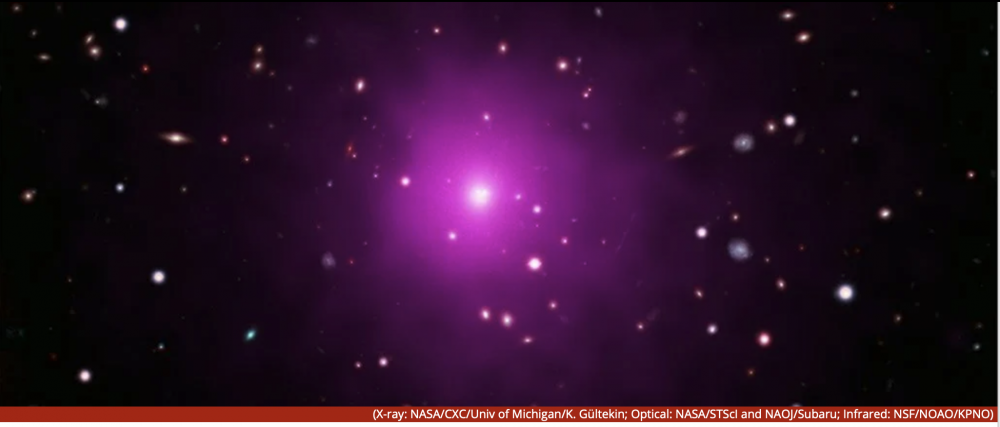Somehow, a Monstrous Supermassive Black Hole Has Gone Missing

MICHELLE STARR 18 DECEMBER 2020
The Universe is full of galaxy clusters, but Abell 2261 is in a class of its own. In the galaxy in the centre of the cluster, where there should be one of the biggest supermassive black holes in the Universe, astronomers have been able to find no trace of such an object.
And a new search has only made the absence more puzzling: if the supermassive black hole got yeeted out into space, it should have left evidence of its passage. But there's no sign of it in the material surrounding the galactic centre, either.
But this means that constraints can be placed on what the supermassive black hole - if it is there, evading detection - is doing.
Galaxy clusters are the largest known gravitationally bound structures in the Universe. Typically, they're groups of hundreds to thousands of galaxies that are bound together, with one huge, abnormally bright galaxy at or close the centre, known as the brightest cluster galaxy (BCG).
But even among BCGs, Abell 2261's BCG (named, in fact, A2261-BCG, and located about 2.7 billion light-years away) stands out. It's about a million light-years across - up to to 10 times the size of the Milky Way galaxy - and it has a huge, puffy core 10,000 light-years across, the largest galactic core ever seen.
See full text